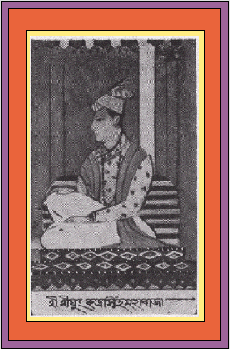

Rudra Singha
The
Ahom, a Shan tribe from which the name Assam is probably derived, crossed
the Patkai Mountains from Burman in 1228 AD and by the sixteenth century
had absorbed the Chutiya and Kachari kingdoms of the upper Brahmaputra,subdued
the neighboring hill tribes, and integrated the Bhuyans into the administrative
apparatus of a feudalistic state. The kingdom of the Ahom reached its
height under Rudra Xingha (reign, 1696-1714), the renowned military strategist
and patron of the buranji, or Ahom chronicles.During the later half of
the sixteenth century, the revered gossain and Assamese cultural hero,
Shankar Deva, inspired a popular Vaishnavite movement that sought to reform
the esoteric practices of Tantric Hinduism and to limit the prerogatives
of the brahmanas attached to the Ahom court.
In 1838, all of northeast India became part of the Bengal Presidency of British India. In 1874, Assam was separated from Begal, and was constituted into a separate province by itself. In 1912, the partition was nullified, and Assam was made a separate provinve once more. Following Indian independence in 1947, the Assamese won control of their state assembly and launched a campaign to reassert the preeminence of Assamese culture in the region. The Indian Government parititioned former Assamese territories into the tribal states of Nagaland,Mizoram, Meghalaya, Manipur,Tripura and Arunachal Pradesh over the next twenty years.